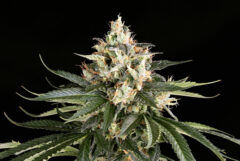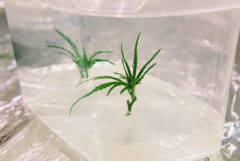In this grow report, we’ll explore our time with Blue Sunset Feminized; a 60% indica developed in tandem with the team at Sherbinskis. We were a bit surprised by this strain’s distinctly sativa-like growth pattern but the extra height proved to be incredibly productive, providing a truly massive yield of incredibly potent buds.
Total growing time: 90 days
Flowering time: 60 days
Final height: 139 cm
Final yield: 186 grams
THC content: 23.31%
This time around, we kept our Blue Sunset Feminized cannabis plant in a 12-litre plastic pot filled with BAC Lava Mix and topped with a thin layer of Rockwool cubes. This was then placed under a 1000 W Phillips GreenPower HPS light, on an 18/6 schedule, hanging 3 metres above the plant. To provide the best possible environment for our plant, we kept the daytime temperature at a steady 23°C with a nighttime temperature of 21°C and a relative humidity of 65% during vegetation.
Germination & seedling
To start our Blue Sunset on its path, we first needed to germinate the seed. As always, we used the trusty paper towel method; just place a damp paper towel on a plate, put your seed on top, cover it with another damp paper towel, and place the whole setup into an open plastic bag. After about a day, the seed shell cracked open to expose the taproot.
Next, we planted our seed into a pre-soaked Rockwool cube with the taproot pointing down and placed it under a Phillips 600 W lamp. At this stage, it’s best to simply leave your plant alone for a few days as excessive light, water, or heat could cause lasting damage. After three days, we gave the plant its first watering; 100 ml of pH-balanced water (pH 6.2: EC 0.8) with a small amount of rooting hormone.
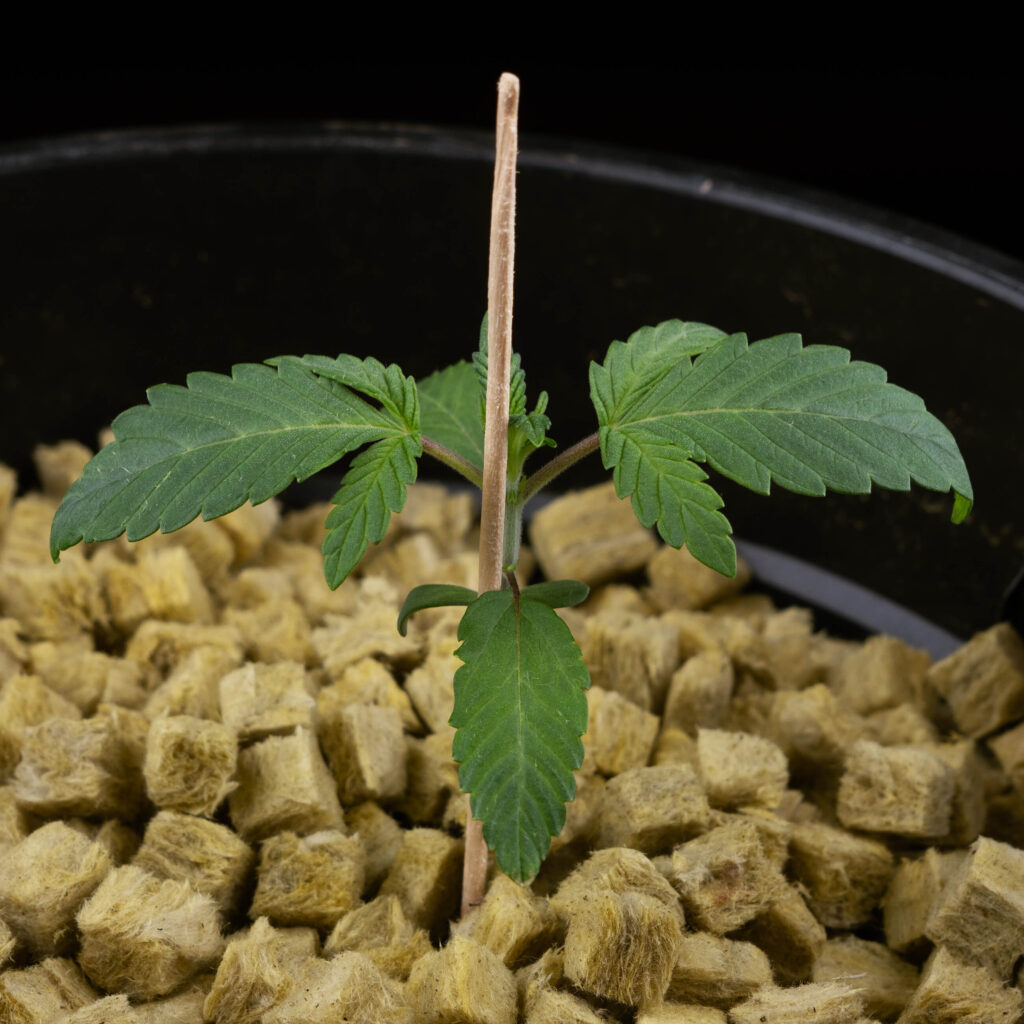

After the first week, our seedling was about 9 cm tall and had grown its first true leaves. At this point, we moved it into its new home—a 12-litre plastic pot filled with BAC Lava Mix and topped with tiny Rockwool cubes and we gave it a small support rod just to give it a little boost early. This pot was then placed under our 1000 W light and we began daily waterings with 100 ml of water (pH 6.0; EC 1.4) mixed with Bio Grow liquid nutrients.
Vegetation
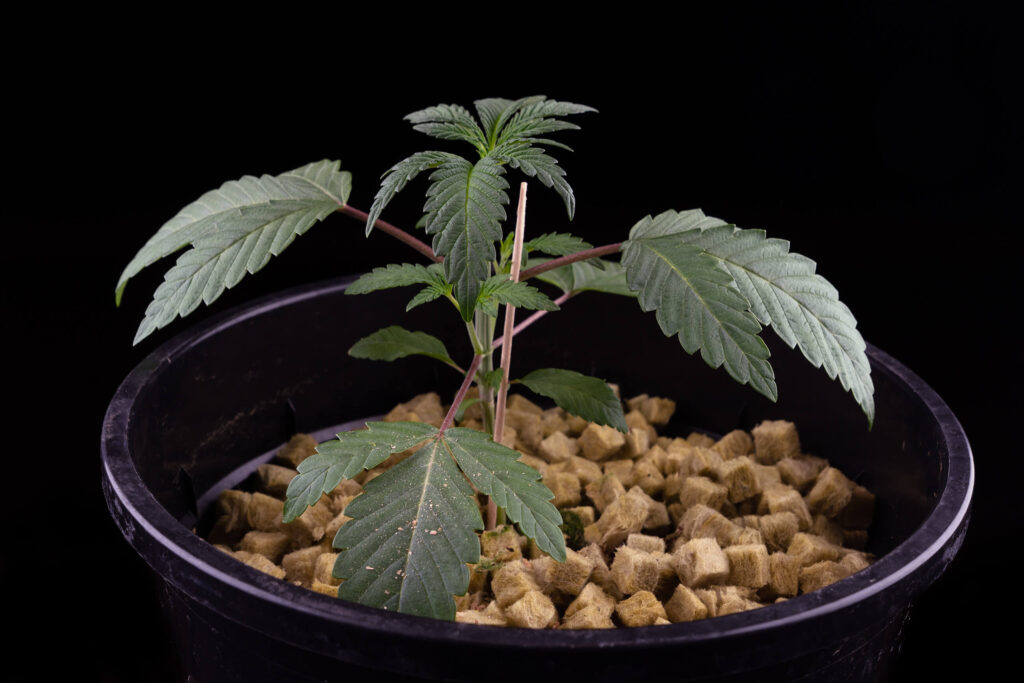
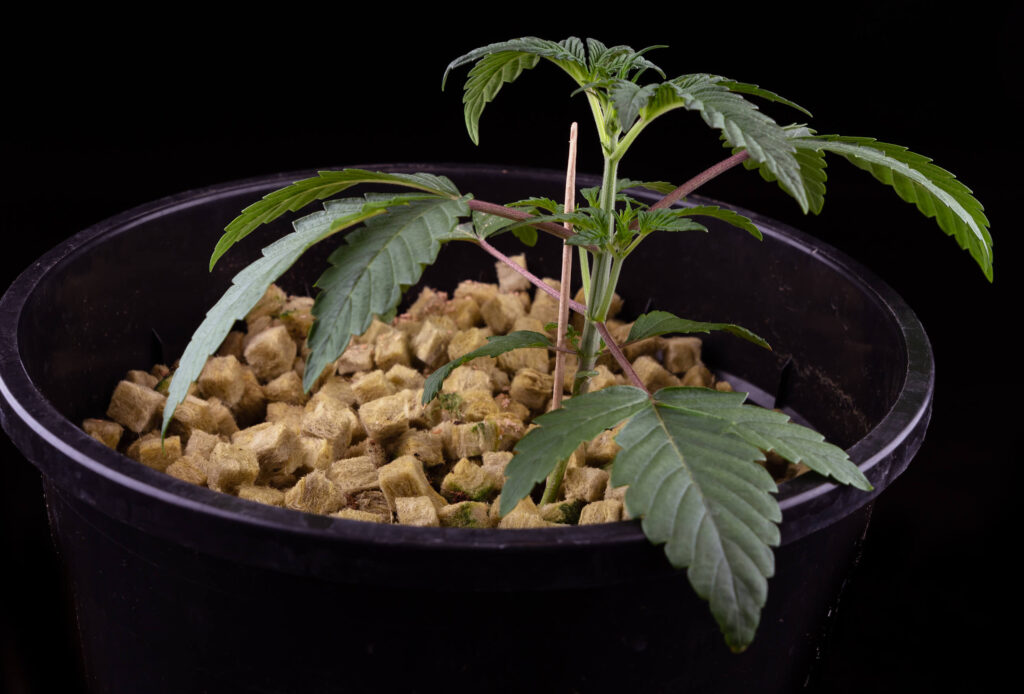
In week two, our plant grew to 12 cm and sprouted a few sets of new leaves. The internodal spacing was incredibly long and the leaves were fairly small on long stems. Overall, the plant seemed quite healthy even if it was one of the more slender plants we’ve seen. To give it all it needed to keep growing, we doubled the water to 200 ml per day.
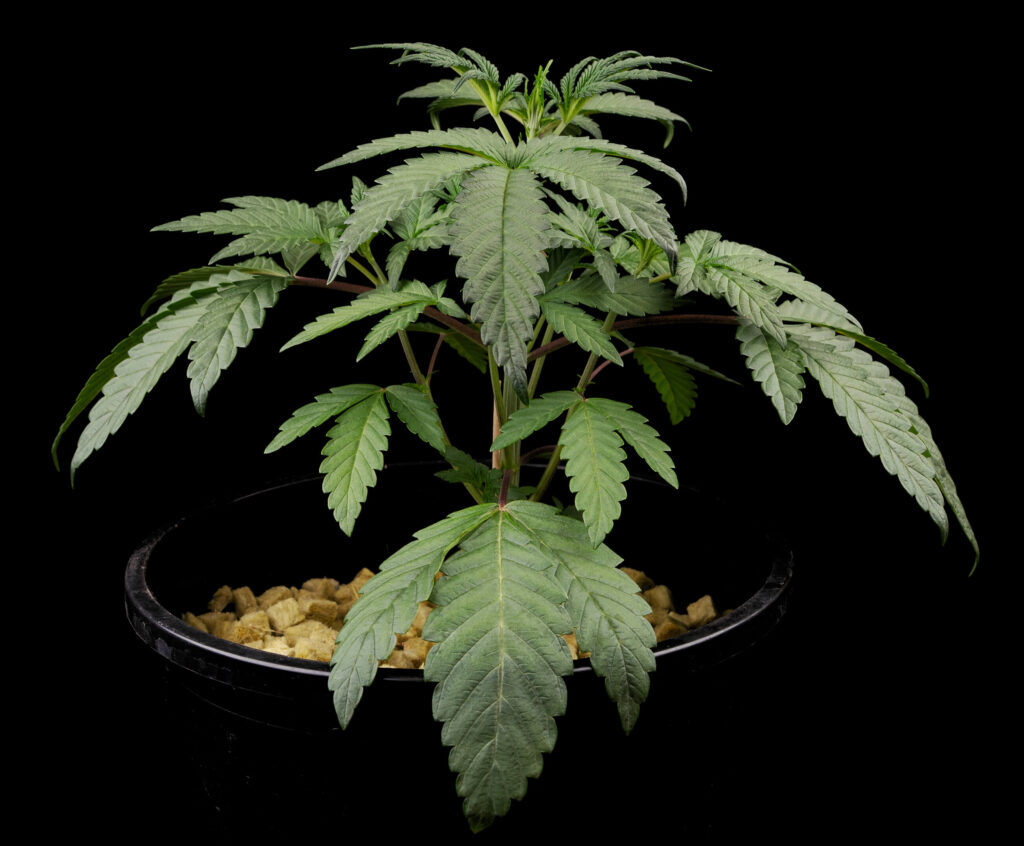
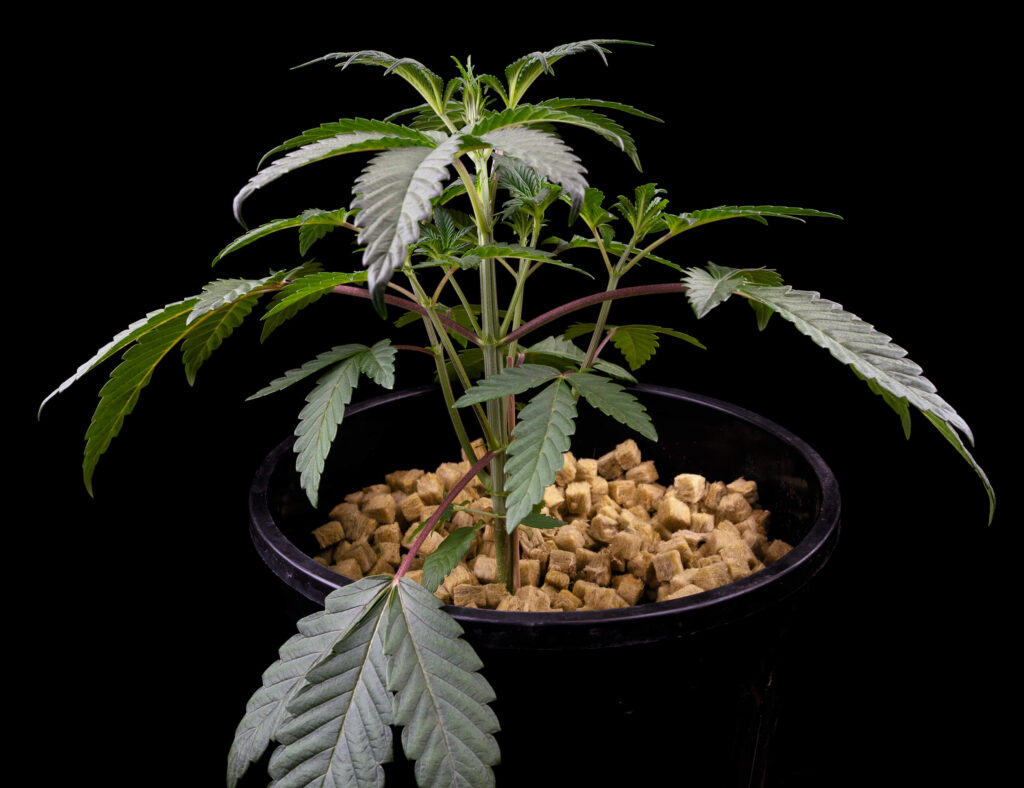
Week three saw our plant double in height to 24 cm. Internodal spacing was still bordering on extreme but the leaves were growing ever larger. Even this early, the lateral branches were already nearly as tall as the main stalk and were growing almost vertically. With flowering starting next week, we again doubled the volume of water to 400 ml.
Before making the switch to flowering, we also hung satchels of Neoseiulus californicus and Amblyseius swirskii on the plant’s lower branches. These are filled with beneficial bugs that have a symbiotic relationship with cannabis plants. These things don’t harm plants at all but instead hunt down pests like spider mites and thrips which can wreak havoc in any garden. We replace these satchels every four weeks to keep a constant supply.
Flowering
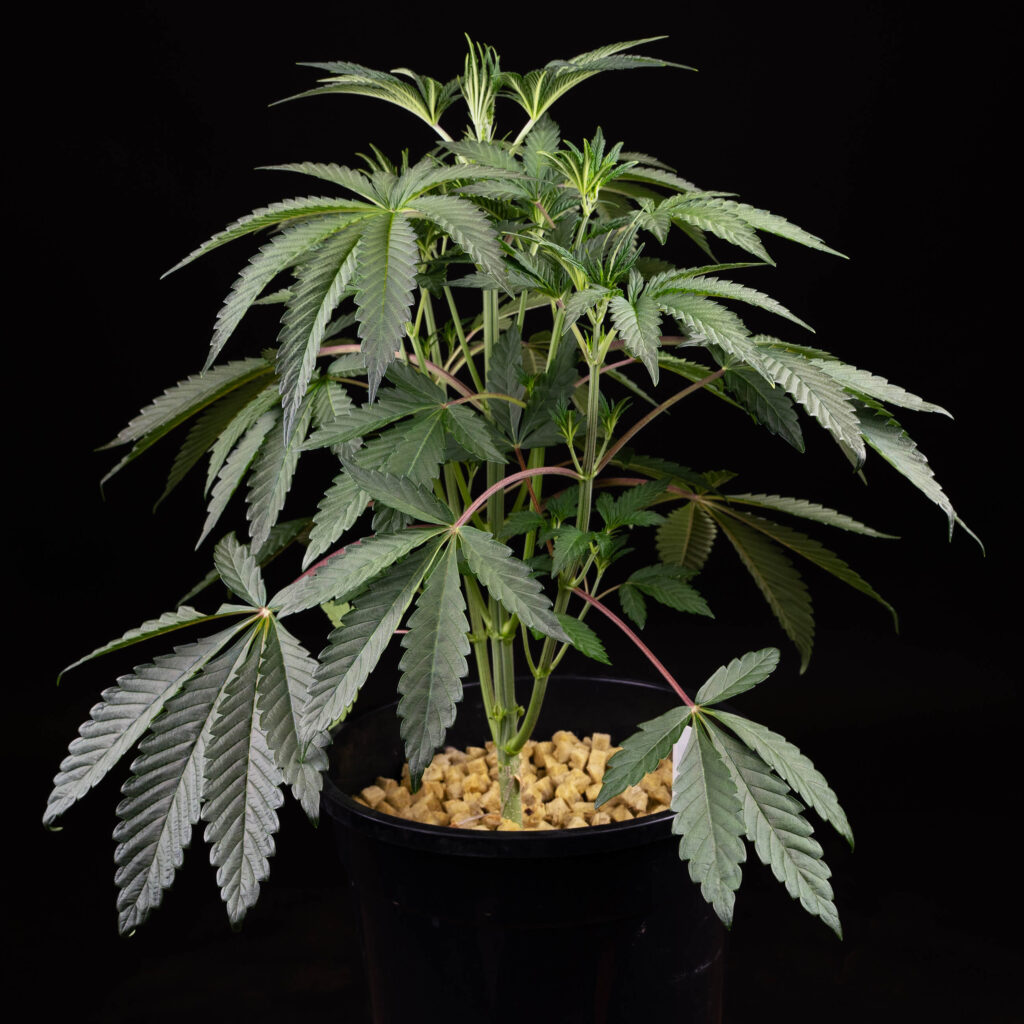
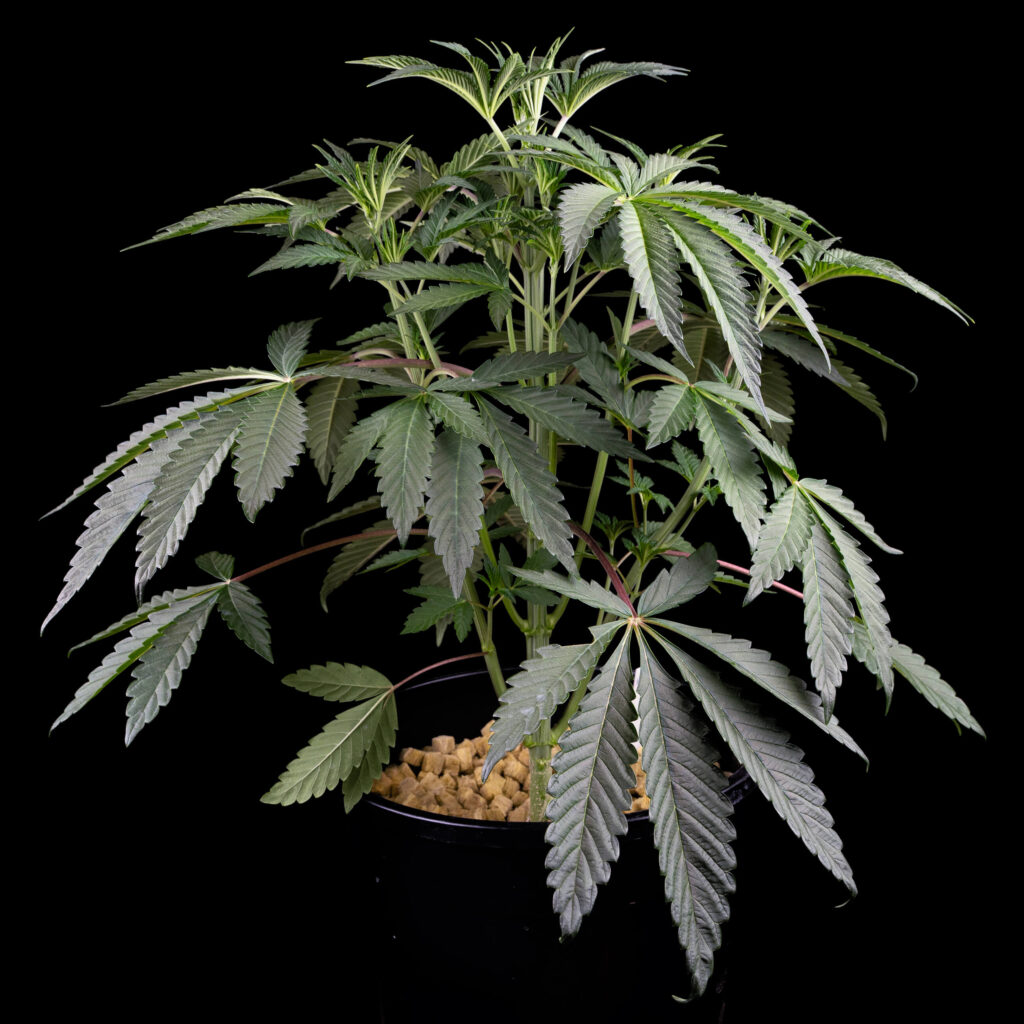
At the start of week four, we began flowering our plant. This simply required switching the lights to a 12/12 schedule, reducing the humidity to 60%, and feeding with 800 ml of water (pH 6.0; EC 1.8) mixed with Bio Flower liquid nutrients. Over the week, our plant grew to 42 cm with the main stem standing only slightly taller than the lower branches. The branches were thickening up nicely and were growing nearly vertically giving this plant a very unique profile.
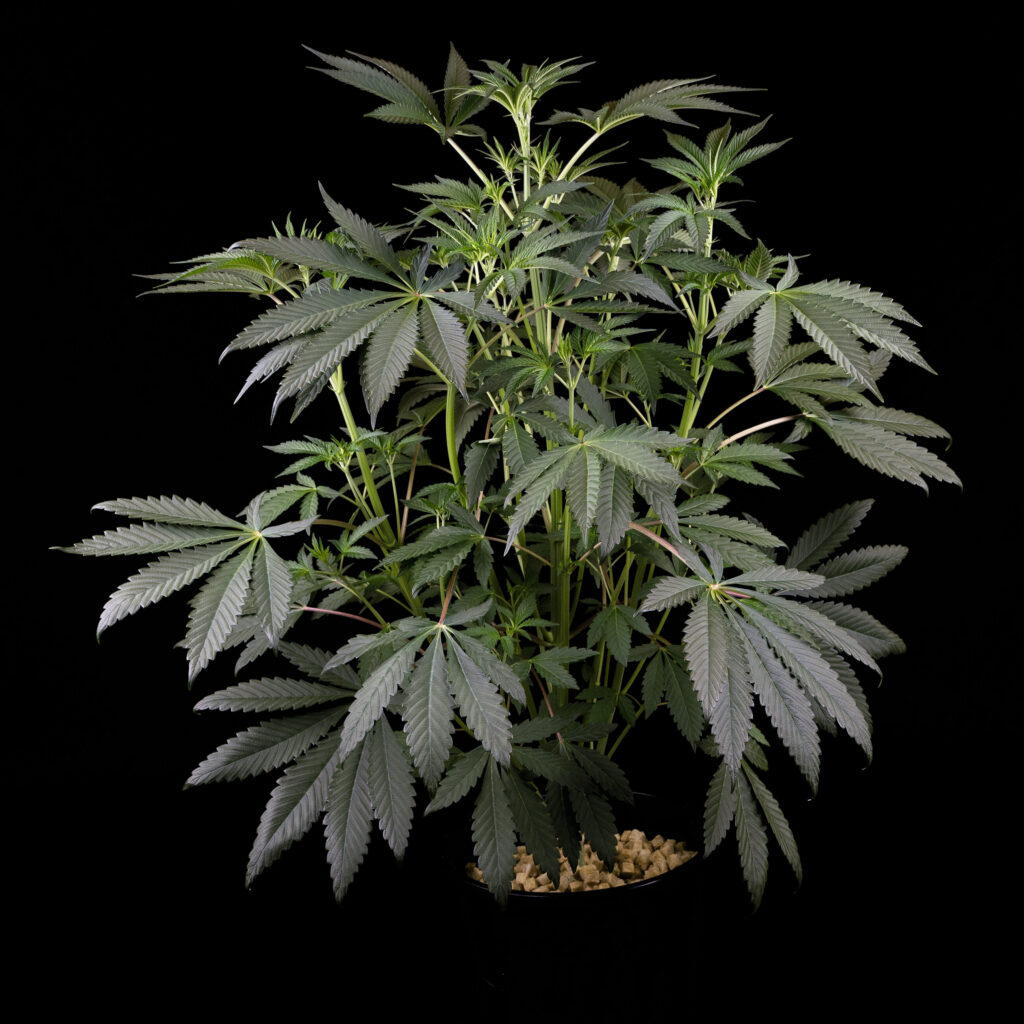
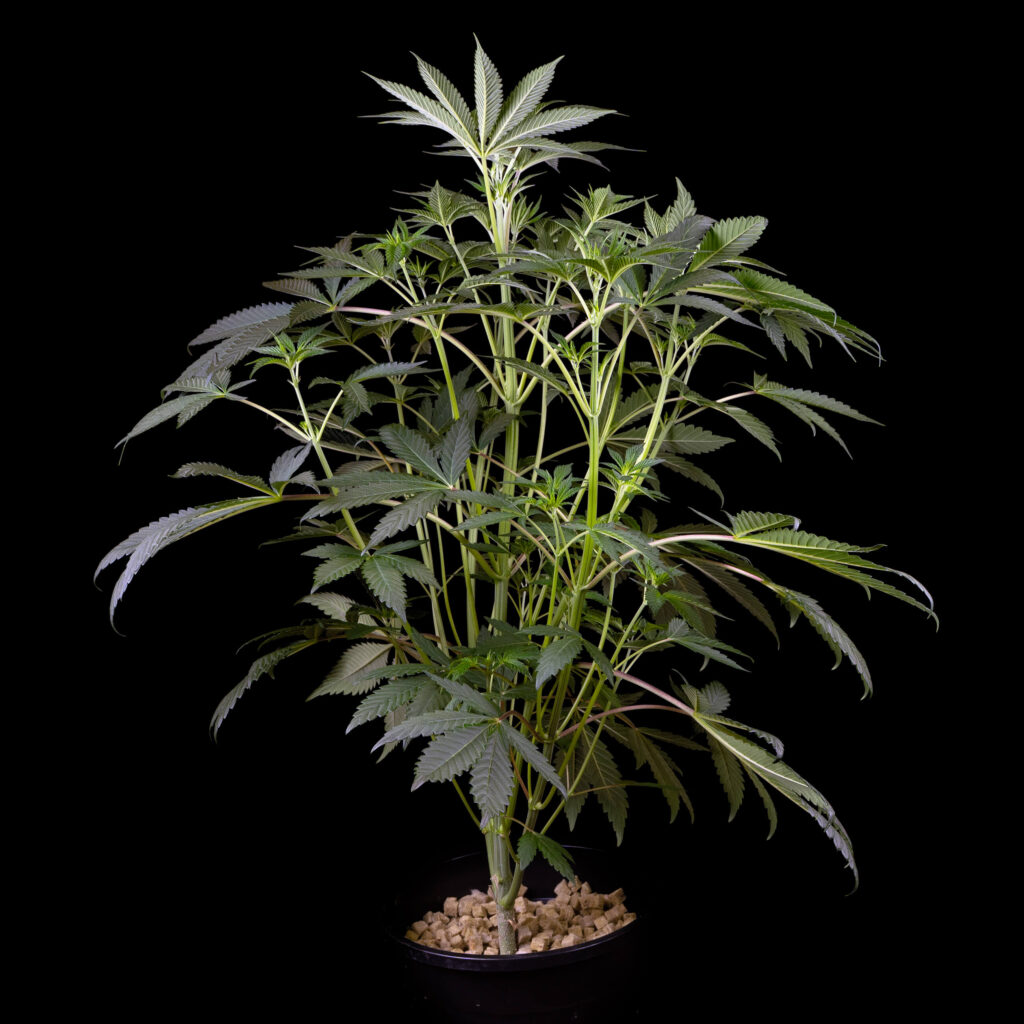
In week five, our plant reached a new height of 67 cm with almost all of that height coming as internodal stretch. Vegetation was incredibly sparse among the long branches, but the leaves were massive and robust. With the plant set to start flowering any day now, we upped the water to 1000 ml per day.
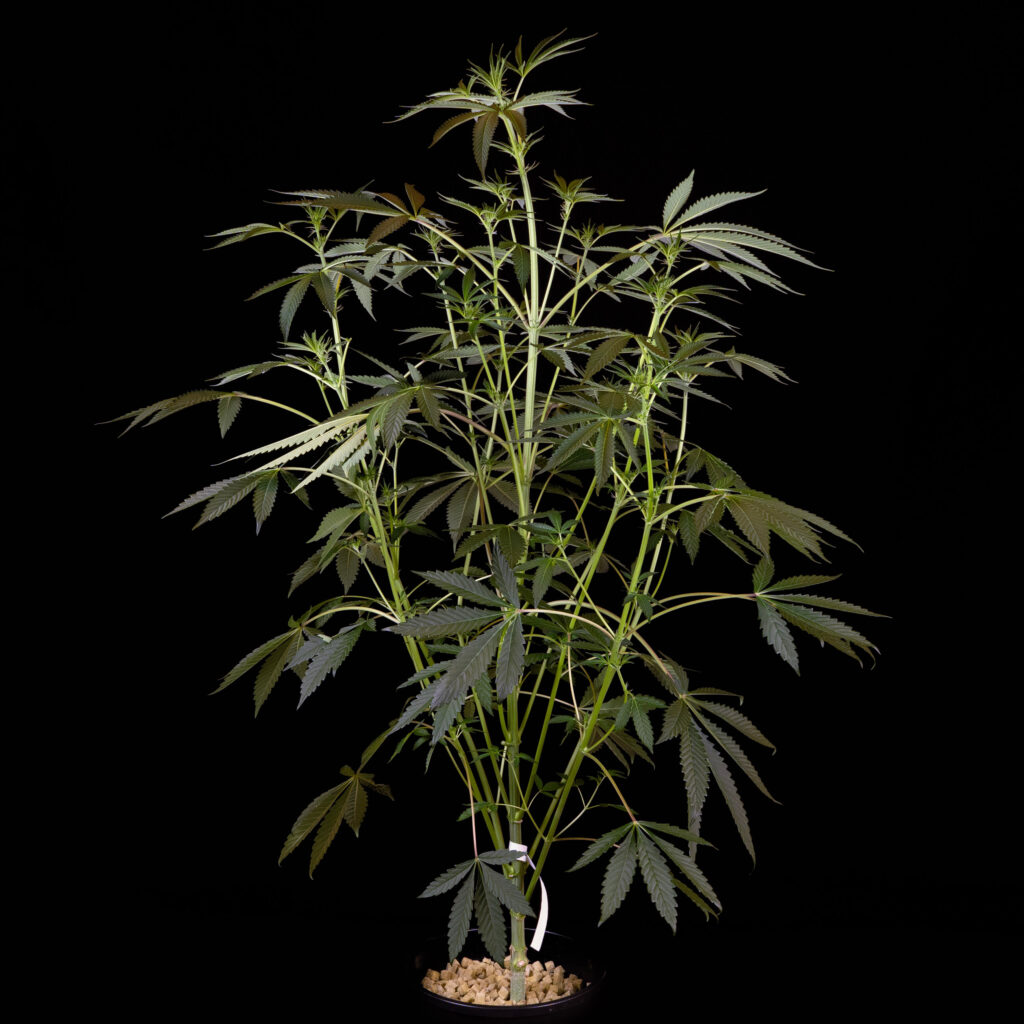

Week six saw one of the largest week-on-week gains we’ve ever seen with our plant gaining 36 cm to climb to a towering 103 cm tall. Again, this was almost entirely stretch with up to 20 cm between nodes. We were beginning to see the very first signs of flowering with single white pistils popping up all along the stem and branches. This week, we upped our feedings to 1500 ml of water which would stay constant for the rest of the grow.
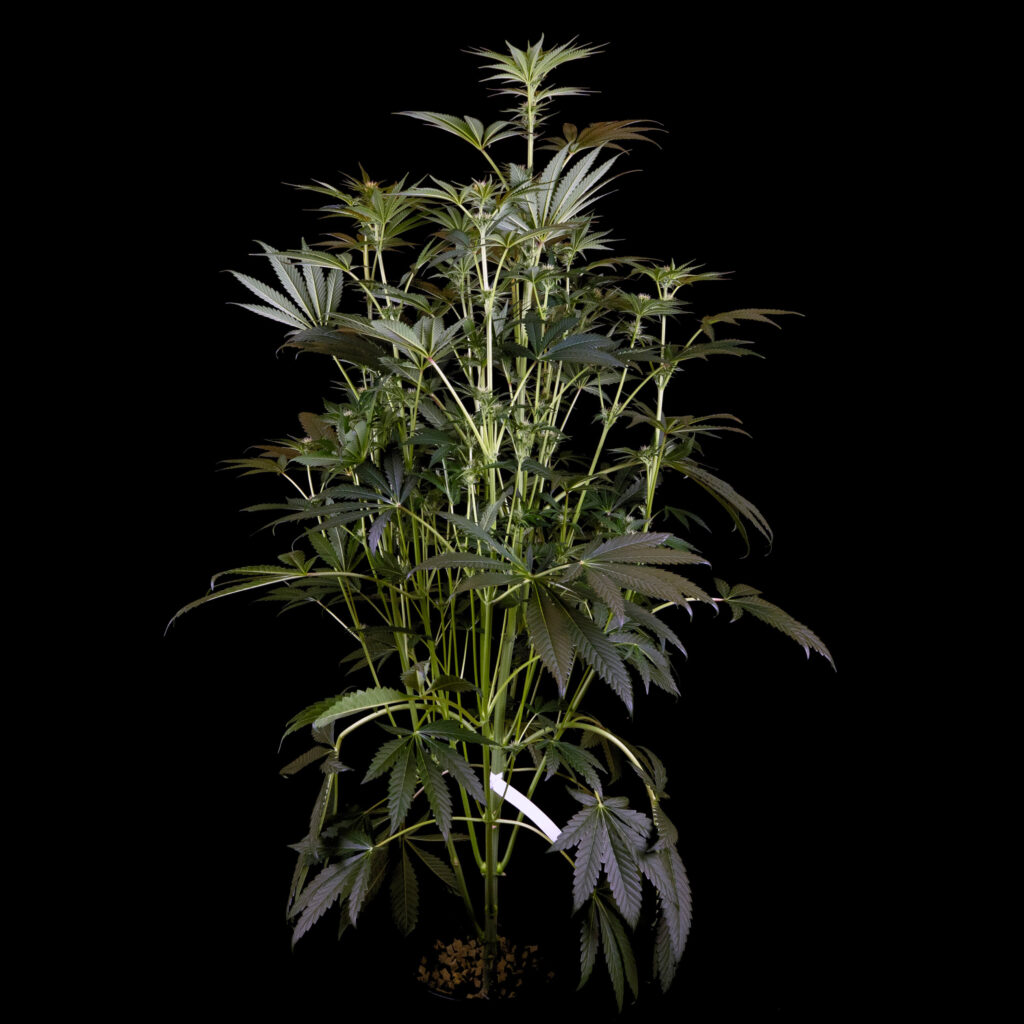
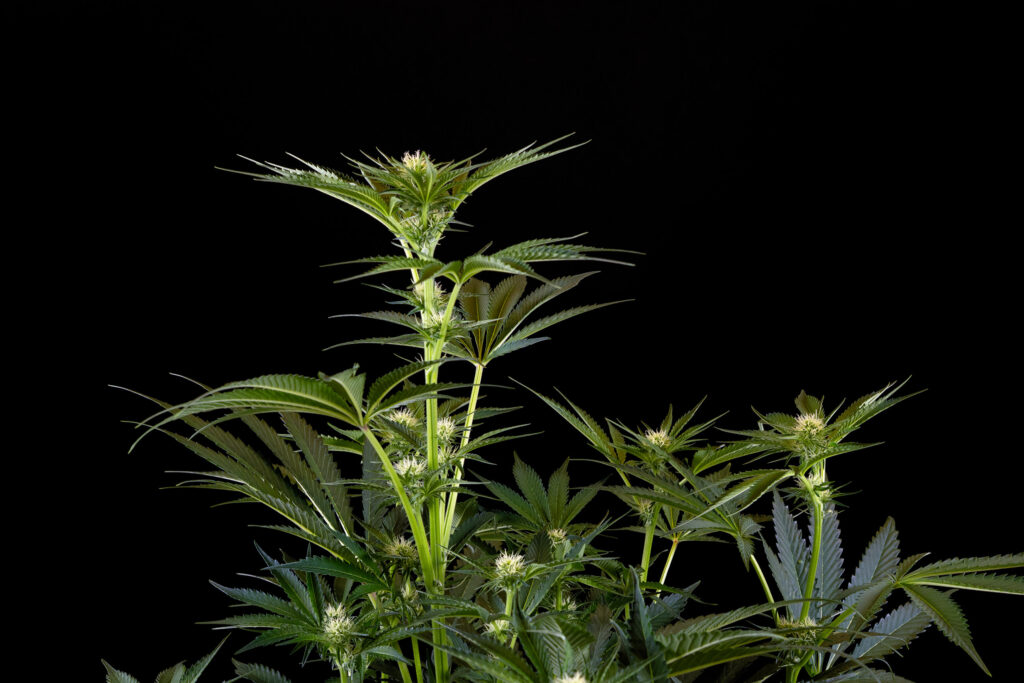
Week seven gave us our last growth spurt as our plant grew to 125 cm. The main stem was finally standing slightly above the lower branches, but the plant was retaining a nice canopy. The lateral branches were still almost entirely vertical and the plant had a truly unique inverted Christmas tree shape. By now, each flowering site was home to a rapidly growing cluster of white pistils.

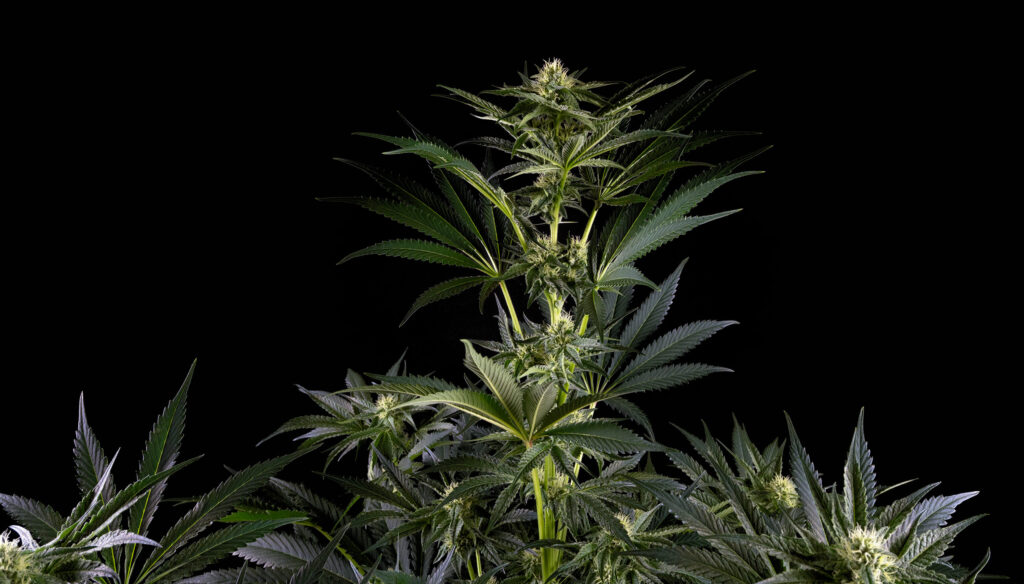
By week eight, our plant had almost stopped growing vertically reaching a height of 129 cm. Flower production was accelerating rapidly and the branches were doing a good job of supporting the increasingly dense flowers.
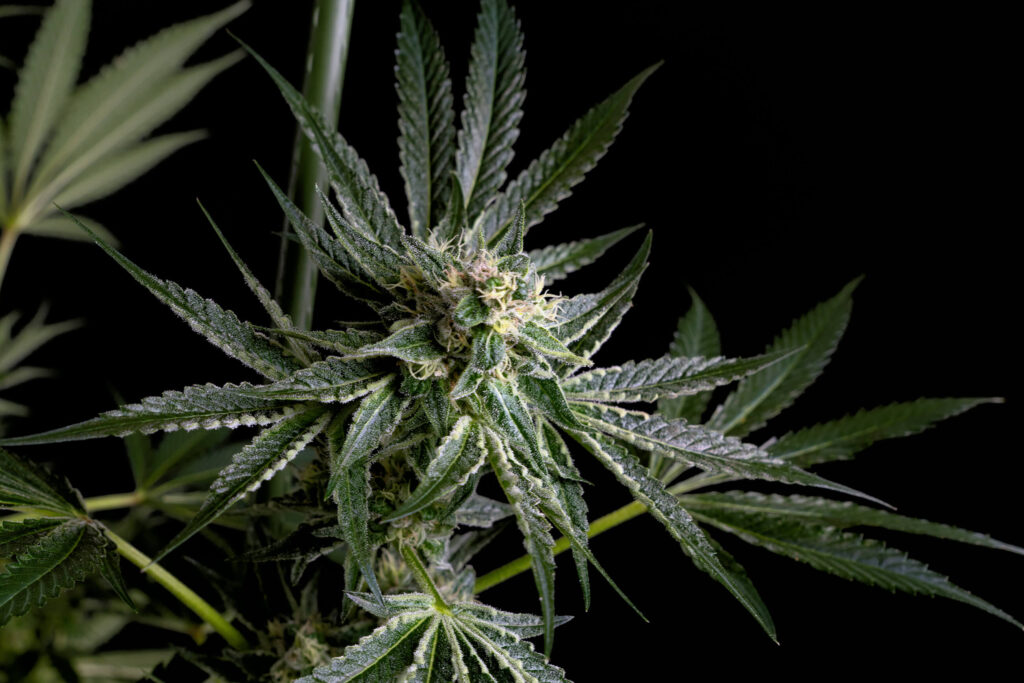
Weeks nine and ten saw our plant reach its maximum height of 139 cm and the buds were developing amazingly well. The main cola was covering the top quarter of the plant and each branch was beginning to bend under the weight of its buds.
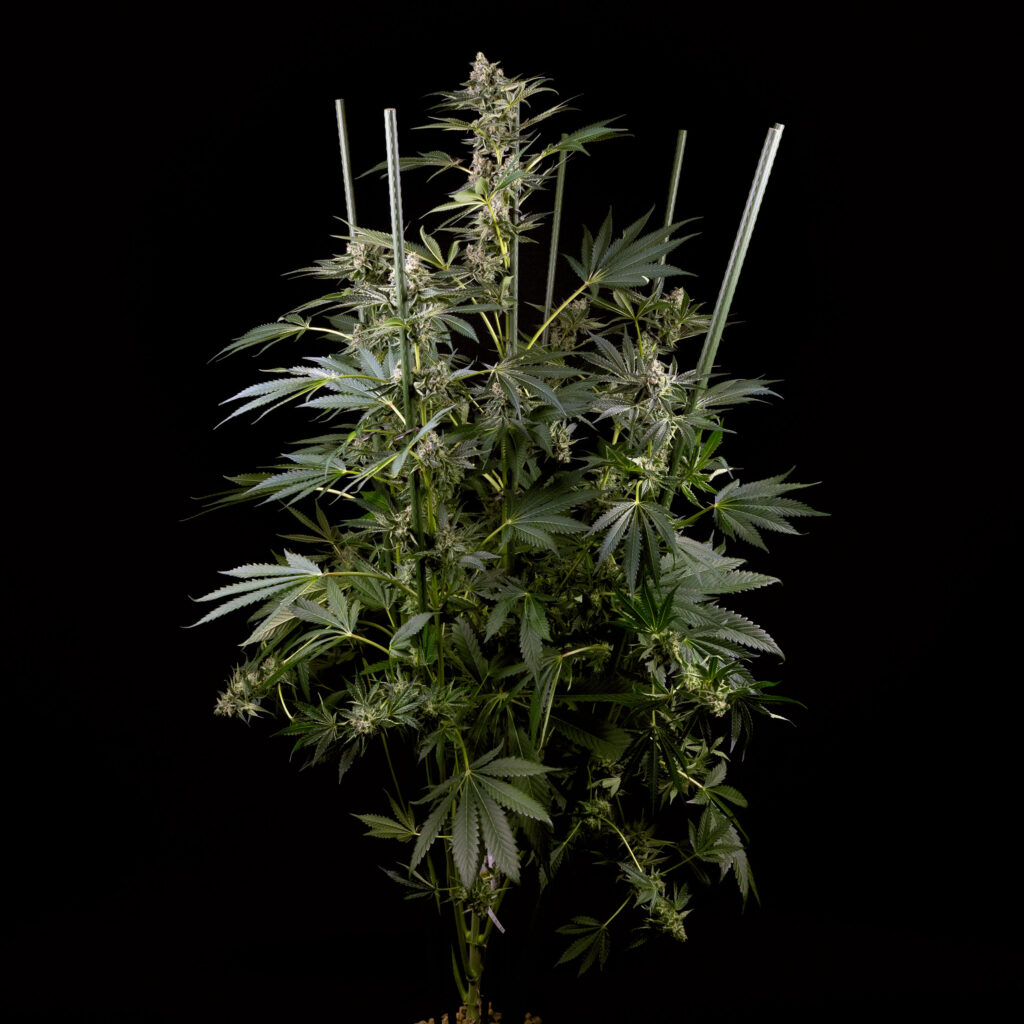
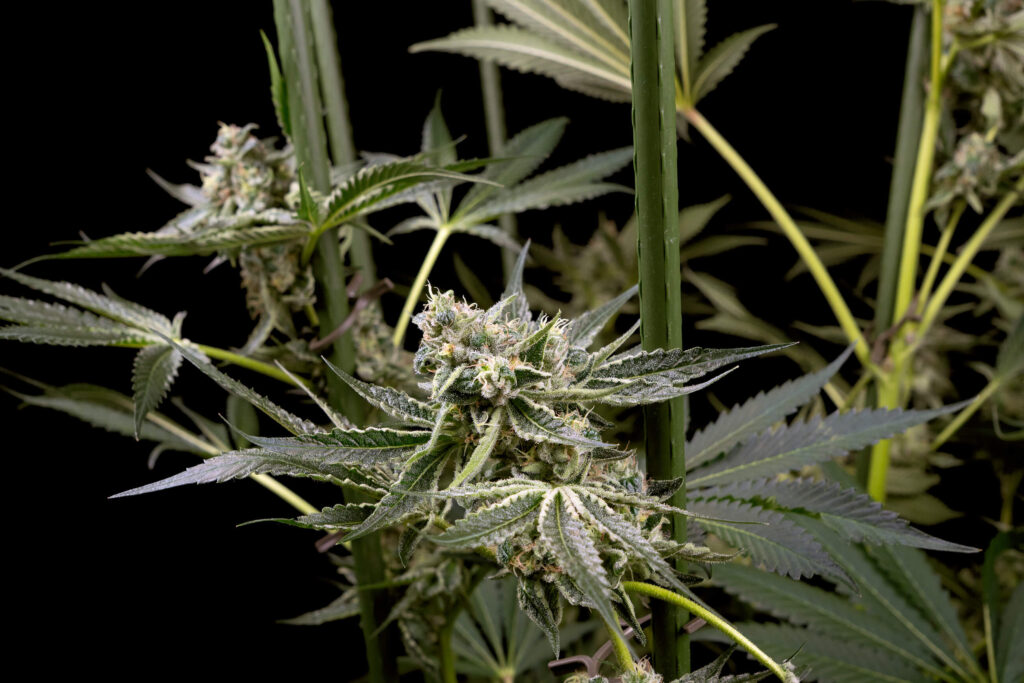
In week eleven, we needed to add several support rods to keep the plant from collapsing under its weight. By now, the first pistils were gradually turning orange indicating that harvest time was quickly approaching.
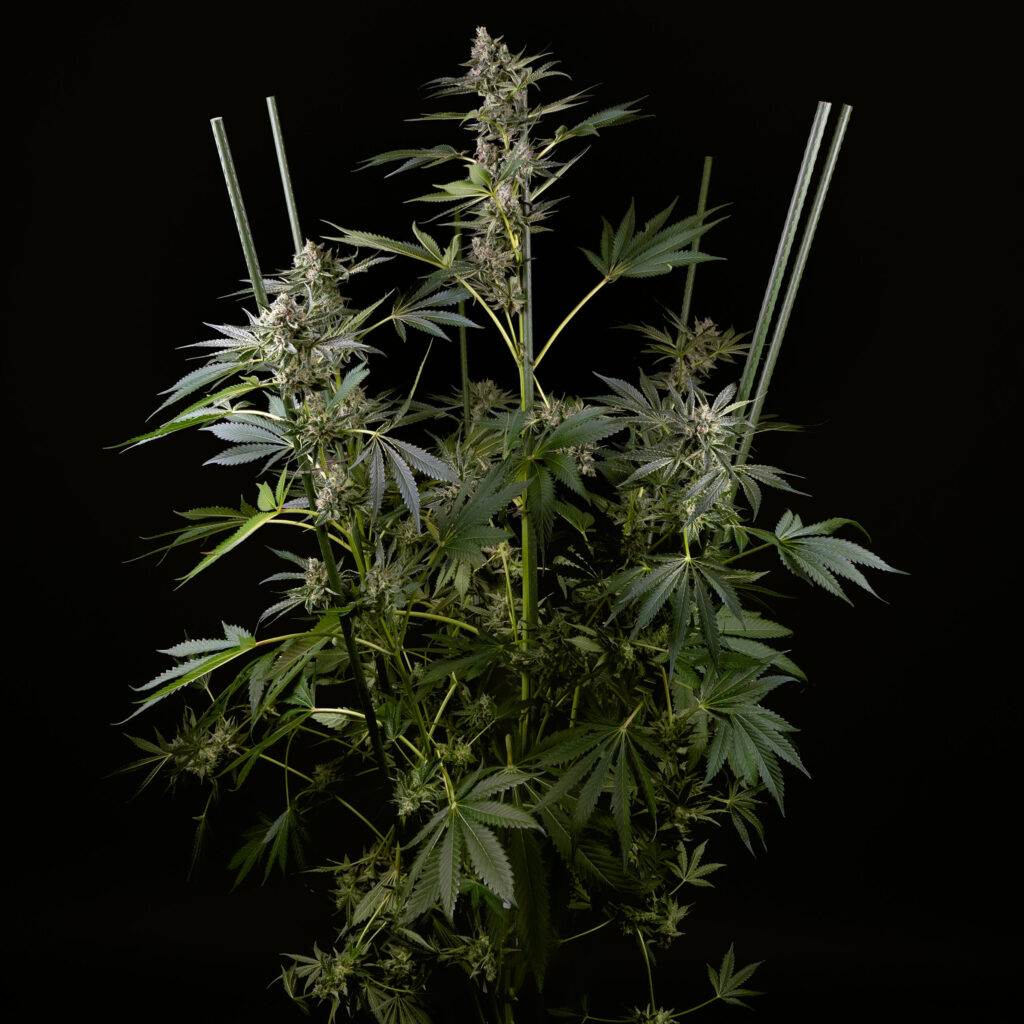
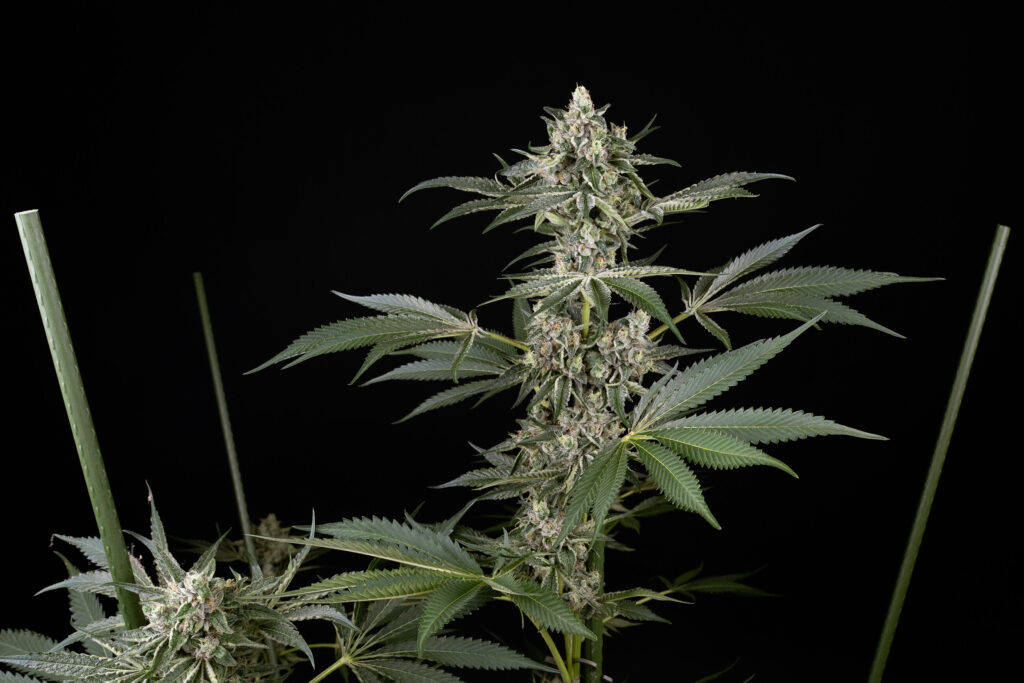
Week twelve saw more and more pistils change colour as the buds gradually slowed their growth. The trichomes were rapidly turning a lovely amber and there was nothing left to do.
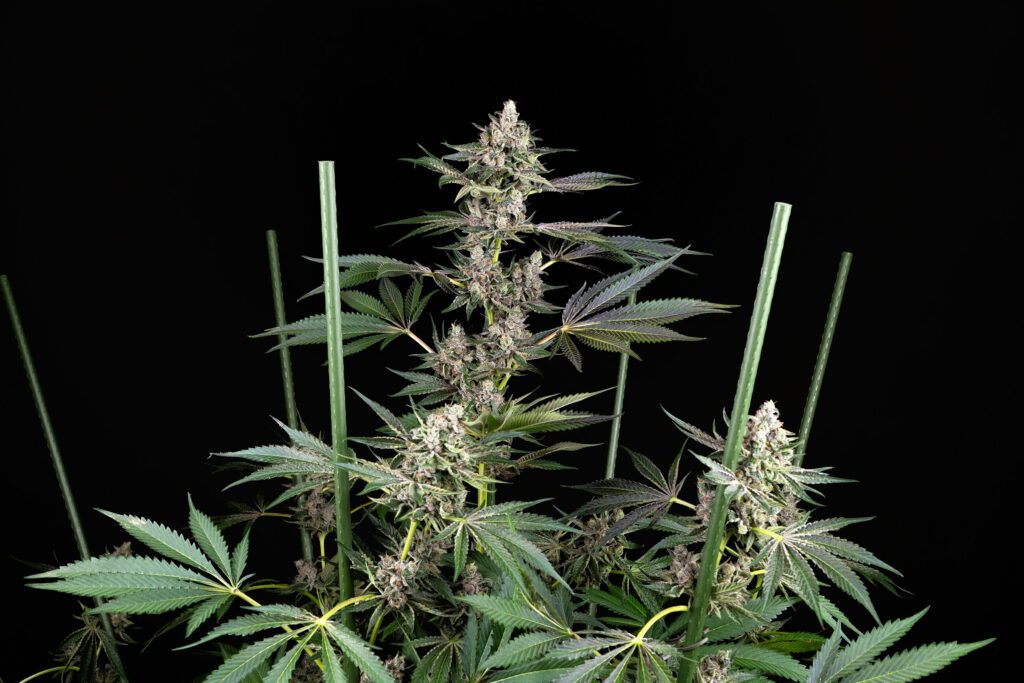
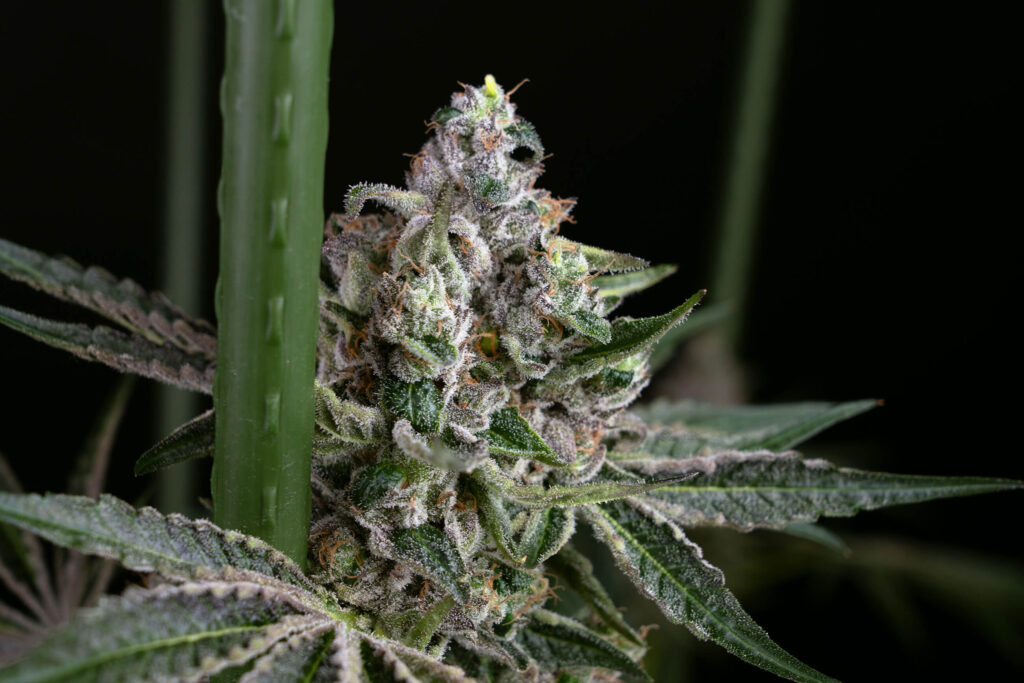
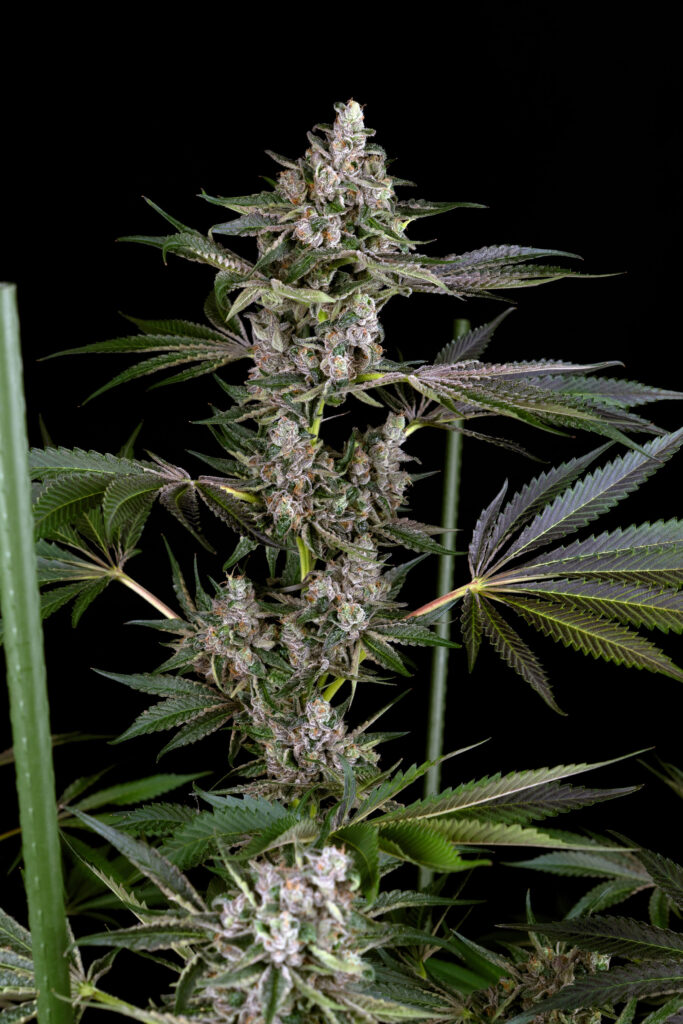
In week thirteen, we harvested our plant.
Harvest
To kick off the harvest, we cut down our Blue Sunset at the base and hung it upside-down in a climate-controlled environment for the next few weeks. By keeping a steady temperature of 15.5°C and a relative humidity level of 50%, we were able to greatly reduce the risk of mould or disease during the drying process. We left it here until the smaller branches became brittle enough to snap; usually 10-20 days.
Next, we needed to remove the buds from the branches and trim away any remaining leaves. The flowers from our plant were fairly large and dense, however, they didn’t grow into single massive colas. Thanks to the strain’s heavy sativa genetics, we wound up with a large number of fairly leafy buds which made trimming a lengthy process.
Lastly, the buds were transferred into glass jars for curing. At first, we left these jars unsealed for 24 hours to allow for the evaporation of most of the remaining moisture. After this, the jars were sealed, and “burped” multiple times daily for the first two weeks. This frequency was gradually reduced to only once daily until the buds reached the desired consistency. Overall, the entire process takes an average of 4 to 6 weeks.
In the end, we were able to harvest a staggering 186 grams of finished flowers with an equally impressive THC content of 23.31%.
Terpene profile
As we approached harvest, we began to notice a subtle—though distinct—aroma coming from our grow space. The smell is a pleasant blend of blueberries and citrus with a hint of earthiness just underneath the surface. Once cured, these same notes come out in full force and provide a truly delicious treat.
While the strain grows like a sativa, the high is distinctly indica. There’s a short period of uplifting giggly euphoria at first, but this quickly gives way to a powerful body stone that might have you locked to your couch for the next few hours. If you’ve got places to be, this might not be the best strain for you. Instead, consider sampling some Blue Sunset if you’re looking to relax after a long day or just turn your mind off for a few hours to watch a movie.
The outcome
Once it was all said and done, we were thoroughly impressed with our Blue Sunset Feminized cannabis plant. While its tall, slender growth pattern wasn’t quite what we were expecting, it was never at risk of getting out of control. Since the branches grew so tall and stayed so close to the main stem, we were able to maintain an amazing canopy. If you’ve got plenty of height but limited area, this strain is a top contender.
- Disclaimer:Laws and regulations regarding cannabis cultivation differ from country to country. Sensi Seeds therefore strongly advises you to check your local laws and regulations. Do not act in conflict with the law.








